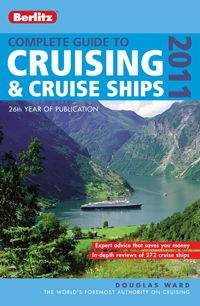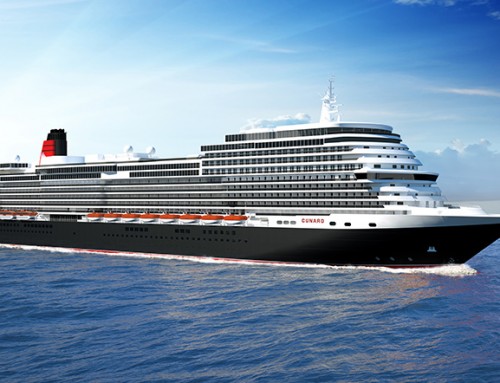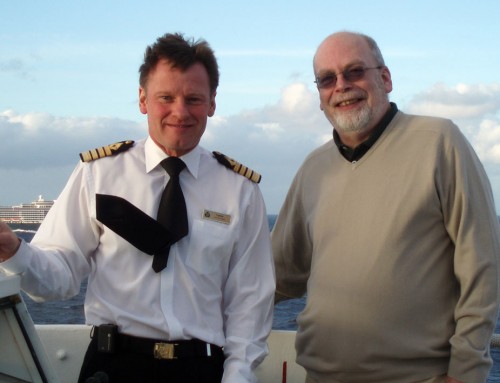 Looking for the best deal on a cruise? Then travel during off-season in an inside cabin on board a ship built before 1980.
Looking for the best deal on a cruise? Then travel during off-season in an inside cabin on board a ship built before 1980.
That’s the advice from cruise guru Douglas Ward, in the 26th edition of the annual Berlitz Guide to Cruising and Cruise Ships, to be published in October.
With 40 years’ experience gained firstly from working on board ships as an entertainer and cruise director, and then as a fastidious inspector and author, Ward certainly knows what he is talking about. When checking out a new ship, he is reputed to take a tape measure to record the distance from lavatory basin to toilet roll holder, and I have witnessed him in action turning over plates in a restaurant in order to examine the maker’s marks.
In the 2011 issue of his Berlitz guide, Ward suggests he can save readers hundreds of pounds by alerting them to six cruising rip-offs. I have added my comments in italics.
Extra gratuities: major cruise lines typically imprint an additional gratuity line on signable receipts for such things as spa treatments or extra-cost coffees and bar charges, despite a 15 per cent gratuity having already been added to the bill. (A common trick employed by restaurants around the world, and not just cruise ships).
Transfer buses: the cost of airport transfer buses in some ports, such as Athens, Barcelona and Civitavecchia (the port for Rome) is unacceptably high. For example, Royal Caribbean International’s Independence of the Seas charges up to $6 one way for the shuttle bus in some ports on its ex-UK Western Mediterranean cruises. (Many cruise lines still provide free shuttles; charges are often imposed by the port authority rather than the ship).
Currency conversion: when it comes to paying the bill for the onboard account, the price quoted is recalculated into a ‘guaranteed’ price which can be higher than the rate quoted by banks or other credit card companies. This does not necessarily occur on the day of the transaction, but later in the month when conversion rates could change to a passenger’s disadvantage. Passengers learn about this only when they receive their credit card statements at home weeks later. (Read the small print and choose to take your card company’s conversion rate).
Mineral water: the cost of bottled mineral water for shore excursions has rocketed. For example Celebrity Cruises charges $4.50 and then adds another 15 per cent gratuity “for your convenience.” (While many cruise lines prohibit passengers from bringing alcohol aboard, I don’t know of any who confiscate water. Buy it at a local supermarket).
Navigation bridge tours: cruise-goers like to see the view from the bridge, but access is restricted and costs are sky high. For example, Princess Cruises charges passengers $150 per person to be entered into a “raffle” to compete for a dozen available tickets per cruise to do ‘The Ultimate Ship’s Tour’ which takes in the bridge, among other ‘backstage’ areas. (Ships’ bridges are not the romantic locations many imagine – you might only see two crewmembers staring out to sea or into computer screens – and modern ships are controlled by joysticks rather than big wooden wheels. Save your money).
Bingo Cards: the cost of cards for a game of bingo is rising dramatically. NCL, for example, now charges $40 for a block of four cards. (Doesn’t that mean the prize money has increased, too?).
The book lists 10 items that are NOT included in the cost of an “all-inclusive” cruise, and Ward also advises readers on how cruise lines have cut costs to stay afloat. Some of the strategies employed are reducing food portions, providing cheaper cuts of meat, reducing the strength of ‘free’ coffee, removing trays from self-service buffets so that passengers can’t help themselves to so much food, reducing service levels and providing minimal staff training.
The guide will include in-depth reviews of 285 cruise ships and previews of 20 new ships set to debut between 2011 and 2014, including Cunard’s Queen Elizabeth, to be launched in October.
Berlitz Complete Guide to Cruising & Cruise Ships 2011 (£16.99, 720 pages) will be published on October 4. Further information at www.berlitzpublishing.com.






Ward’s suggestion to buy water (and soda, too, come to think of it) at grocery stores is apt — even if you’re picking up supplies at a mini-mart near your port it’ll still save you money over buying the stuff onboard. His comment about cruise lines charging pax to bring alcohol aboard but not water made me smile, though. A couple of years ago, Carnival Cruise Lines decided it would prohibit passengers from bringing water onboard (we’re talking a case rather than one bottle bought in port) and the outcry was intense.
It quickly backtracked.
Thanks Carolyn, but the recommendation to buy water ashore was my response (in italics) to Doug Ward’s complaint about cruise ships overcharging on board
The recommendation to bring water is a good one.
Related suggestion – bring a stainless steel water bottle. You can easily refill this with cold water at the buffet station and take with you on shore. It’s also more environmentally-friendly!